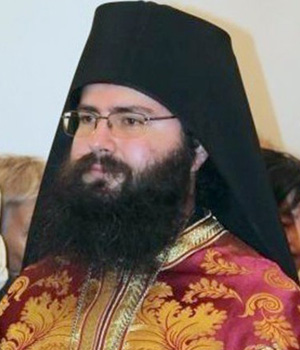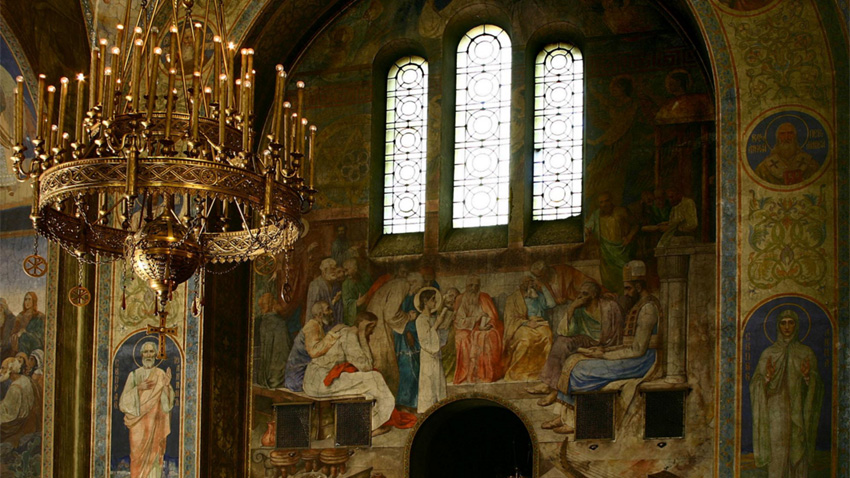Today the St. Alexander Nevsky Cathedral downtown Sofia marks its patron saint’s day. The cathedral was built after the 1877 – 1878 Russo – Turkish War and named after the Russian saint whose relics are kept inside. The temple expresses the gratitude of the Bulgarians towards Tsar Alexander II. The decision for the building’s construction was taken by the Constituent Assembly in the old capital of VelikoTarnovo in 1879, as then-PM PetkoKaravelov had insisted. An address of Prince Alexander Batenberg to the nation resulted in the gathering of funds for the construction and voluntary donations reached the serious sum of 1,900,000 Bulgarian leva. The grounds were laid in 1882, but the construction itself was delayed till 1904 due to draft project issues. Russian architect Alexander Pomerantsev headed the construction which lasted for 8 years. 36 Bulgarian and Russian artists took part in the depicting process and those were headed by famous Czech artist Ivan Mrkvička. The pulpit, the bishop and tsar’s throne and the entire floor are made of marble, alabaster and onyx in a Byzantine style and with Old Bulgarian motifs. Italian and Bulgarian stonemasons worked on the outside façade, with the ornaments crafted by sculptor Vilem Gloss.Distinguished Bulgarian architect Yordan Milanov also participated in the construction and decoration of the cathedral.
The basement of the place houses the crypt that has been transformed into an icon gallery to the National Arts Gallery for Old Bulgarian art. It keeps some of the finest examples of Bulgarian iconography.
 Few people are aware of the fact that in the period 1915 – 1920 the cathedral had a different name. In WWI Bulgaria took the side of Germany, Austro-Hungary and Italy, while Russia was on the opposite side. In 14 October 1915 Russian planes and warships attacked suddenly the Black Sea ‘capital’ of Varna. On 19 October the government of Vasil Radoslavov took the decision to change the name of the temple to St. St. Cyril and Methodius as a response to the attack. Then in 1920 the cathedral was again named after its initial patron and 4 years later it was sanctified like that.
Few people are aware of the fact that in the period 1915 – 1920 the cathedral had a different name. In WWI Bulgaria took the side of Germany, Austro-Hungary and Italy, while Russia was on the opposite side. In 14 October 1915 Russian planes and warships attacked suddenly the Black Sea ‘capital’ of Varna. On 19 October the government of Vasil Radoslavov took the decision to change the name of the temple to St. St. Cyril and Methodius as a response to the attack. Then in 1920 the cathedral was again named after its initial patron and 4 years later it was sanctified like that.
Nowadays the place needs urgent repair works as its murals are endangered. The lack of documents has prevented so far the Holy Synod from applying under EU programs for restoration funding. In 2014 then-caretaker PM Georgi Bliznashki handed over the deed to Patriarch Neophyte.
 Archbishop Gerasim, chair of the church board gives us details on the current state:
Archbishop Gerasim, chair of the church board gives us details on the current state:
“The murals face the greatest problem today due to numerous leaks over the years. Those damaged many spots, especially in the southern aisle. Their restoration will take a lot of time and efforts. An interinstitutional committee has been established for the purpose. Now we need a draft project then restoration experts will be selected. I do believe this will happen now when so many people have got engaged in it.”
Despite being now the temple’s official owner, the Bulgarian Orthodox Church doesn’t have enough funds to maintain it. The EUR 400,000 required by the current government has not been granted so far and that is why the restoration has been stopped. Its next start remains vague, but the years of deadlock will for sure add to the harm done.
 This is the right time to recall the biggest donation in the history of the cathedral – in 2009 elderly ascetic person Grandpa Dobri, now aged 102, donated EUR 17,850 to the temple. The money had been collected via begging. In 2014 journalist Goran Blagoev and producer NayoTitsin presented their documentary, named The Golden Heart of Sofia. The money made by the film went for the restoration as well.
This is the right time to recall the biggest donation in the history of the cathedral – in 2009 elderly ascetic person Grandpa Dobri, now aged 102, donated EUR 17,850 to the temple. The money had been collected via begging. In 2014 journalist Goran Blagoev and producer NayoTitsin presented their documentary, named The Golden Heart of Sofia. The money made by the film went for the restoration as well.
English version: Zhivko Stanchev
Photos: BULFOTO
Archaeologists have discovered a very rare and valuable glass bottle in a 2nd-century tomb in the southern necropolis of the Roman colony Deultum near the village of Debelt (Southeastern Bulgaria). What makes it unique is that it depicts the myth of..
The Days of Croatian Archaeological Heritage, which will last until 8 November, begin today at the National Archaeological Institute with Museum at the Bulgarian Academy of Sciences (NAIM-BAS) in Sofia. The event is organised by the Croatian Embassy in..
Today, 6 November, marks 104 years since the annexation of the Western Outlands in 1920. Traditionally Bulgarian territories in south-eastern Serbia and northern Macedonia were ceded to the Kingdom of Serbs, Croats and Slovenes in 1920 as a result of..
105 years ago, on November 27, 1919, a treaty was signed in the Parisian suburb of Neuilly-sur-Seine, officially ending Bulgaria's..

+359 2 9336 661
